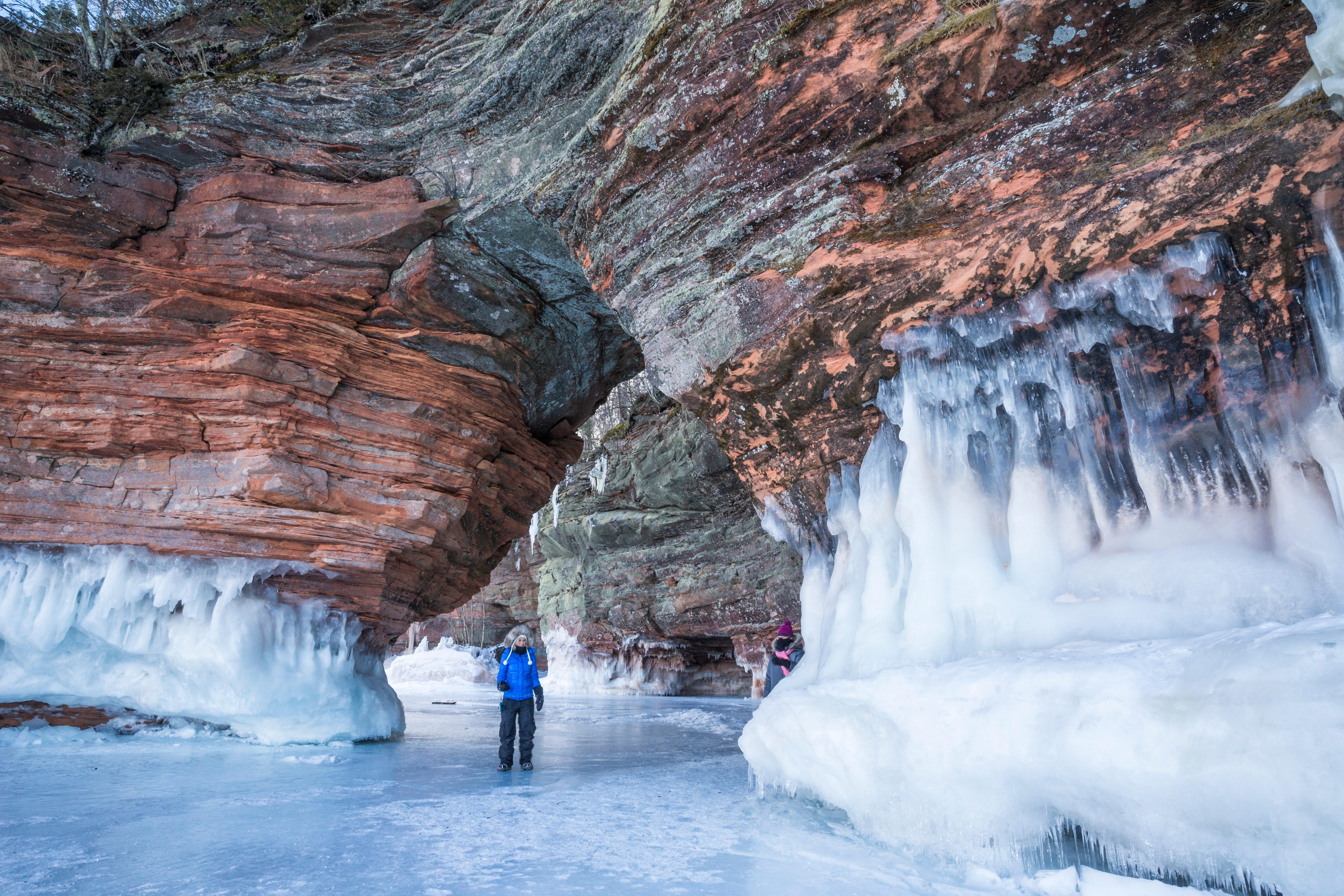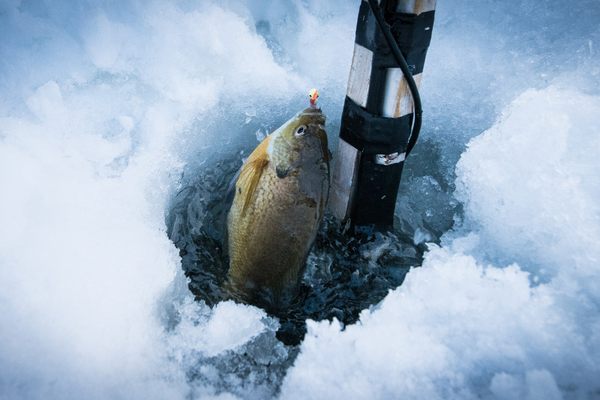No One Has Been Able to Visit Wisconsin’s Spectacular Ice Caves This Year
Another winter has passed without a safe route.

The winter that spanned 2013 and 2014 was frigid, and the Apostle Islands Ice Caves, on the lakeshore of northern Wisconsin, were spectacular. Some years the ice will thaw and freeze and thaw and freeze, but that year the ice formed and never really melted. The cave was full of crystalline formations, and tens of thousands of visitors trekked over the lake’s frozen surface to see them.
Since then, ice cave fans have been waiting for another chance to visit this spectacular spot. But except for a short window in 2015, the ice at the lake’s shore has never frozen solid enough to allow visitors to make the journey. This year, a cold December raised hopes that the ice caves would be open, but earlier this month, the Apostle Islands National Lakeshore wrote on its Facebook page that this would be “another winter without accessible ice caves in the park.”

For the park to allow visitors to hike out to the caves—a treacherous journey even under the best conditions—the ice leading to the caves must meet certain criteria. The park considers the thickness of the ice (at least 10 to 12 inches, depending on the quality of the ice), the length of time it’s stuck around, and its extent—it needs to be locked between points of land.
The stretch of shore where the ice caves are located has little to protect it from the wind, and ice will only really be solidly locked in if it reaches Lake Superior’s north shore, in Minnesota, explains Julie Van Stappen, a park spokesperson. There might be a shelf of ice a mile wide and a couple of feet deep extending from the shore, but wind can still sneak underneath and break it up.
When conditions are cold and calm, a layer of blue or clear ice can form—that’s solid ice. But more often, a few inches of ice form, get broken up, and pushed towards shore by the wind. That broken-up ice can refreeze together, but it’s less strong. The park staff will think it’s approaching conditions that would allow them to open the ice caves, but then “we get a big wind and it blows out,” says Van Stappen.

The park staff has monitored ice conditions more closely in the past few years, after the influx of visitors in 2013-14, so it’s difficult to make an exact comparison between the current streak of disappointment to conditions in the past. But locals remember a few years in the past when it wasn’t possible to visit the ice caves, and a separate study looking at records for a nearby ferry indicated that, since the early 20th century, the period of ice cover had shortened by a full month.
“The winters are milder than they used to be,” says Van Stappen. “They just are.” In 2014, Park Superintendent Bob Krumenaker wrote that, with Lake Superior’s surface temperatures rising and the duration and extent of its ice falling, “climate projections for future ice conditions suggest that access across the Lake to the ice caves would be an increasingly rare experience.” The lake ice just won’t freeze strong enough to bear the weight of the people hoping to experience the strange beauty of caves full of dazzling ice formations.
















Follow us on Twitter to get the latest on the world's hidden wonders.
Like us on Facebook to get the latest on the world's hidden wonders.
Follow us on Twitter Like us on Facebook